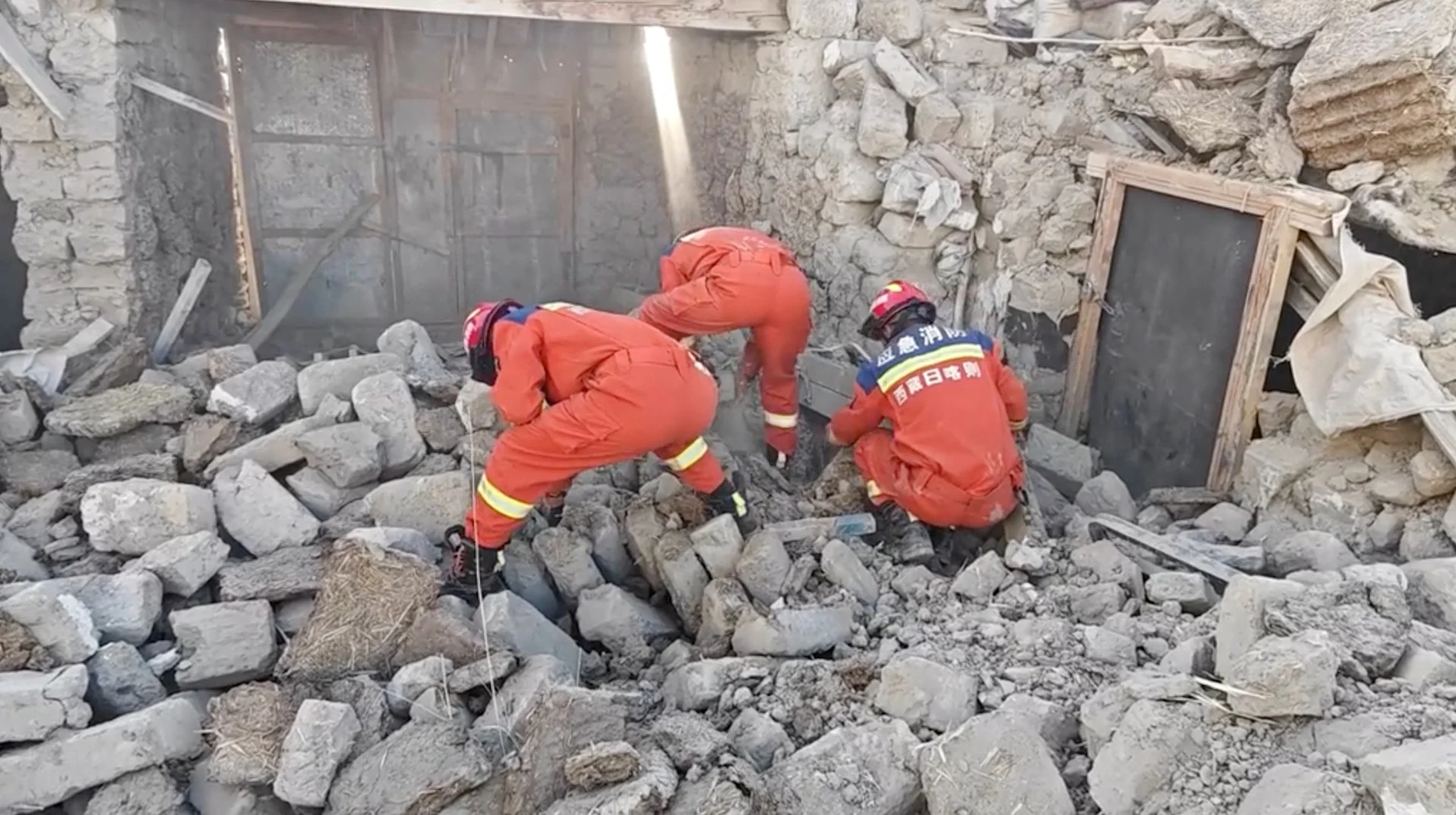
An earthquake near a sacred Buddhist city in Tibet claims more than 120 lives
At least 126 people were killed and hundreds of dwellings were flattened Tuesday when a powerful earthquake near one of Tibet’s holiest cities occurred in the Himalayan foothills, according to Chinese authorities.
The epicenter of the magnitude 6.8 earthquake occurred around 80 kilometers (50 miles) north of the highest mountain in the world, Mount Everest. Buildings in Bhutan, India, and Nepal, which are nearby, were also shaken by the tremors.
800,000 people live in the Shigatse district of Tibet, which was affected. Shigatse city, the traditional residence of the Panchen Lama, one of the most significant personalities in Tibetan Buddhism, serves as the administrative center for the area.
According to footage supplied by Tibet Fire and Rescue, several residences in Shigatse city were reduced to rubble. It revealed that rescuers combed through the wreckage of a destroyed house and extracted one injured individual.
Temperatures in the area dropped to minus 6 degrees Celsius (21 degrees Fahrenheit) late Tuesday, and overnight lows of – 16 degrees Celsius (3 degrees F) were predicted, further compounding the suffering of those who were left homeless.
According to the China Earthquake Networks Center, the epicenter is 10 kilometers (6.2 miles) deep in Tingri County, which is referred to as the northern entrance to the Everest area. The magnitude of the earthquake was 7.1, according to the U.S. Geological Service. At 9:05 a.m. (0105 GMT), it hit.
China’s state-run Xinhua news agency said that at least 126 people were confirmed dead and 188 injured on the Tibetan side. Deaths elsewhere were not reported.
State television footage CCTV saw troops setting up makeshift shelters and rescuers administering cardiopulmonary resuscitation to an injured individual.
The spiritual head of Tibet, the Dalai Lama, expressed his profound sadness when he and thousands of Tibetans fled to India in early 1959 following a failed rebellion against Chinese control.
In a statement, the Nobel Peace Prize winner stated, “I offer my prayers for those who have lost their lives and extend my wishes for a swift recovery to all who have been injured.”
According to Chinese President Xi Jinping, massive search and rescue operations should be conducted in order to reduce the number of deaths and relocate impacted individuals.
Rights organizations and exiles have criticized Beijing, which runs Tibet as an autonomous territory inside China, for allegedly violating the Tibetan people’s religious and cultural rights. Beijing has denied these accusations.
Following the earthquake, China banned travelers from the Everest region, according to Xinhua.
Although many climbers and trekkers travel to Mount Everest, winter is not the best time of year to go hiking or climbing in Nepal.
According to Lilathar Awasthi of the tourist department, the only mountaineer having a permit to ascend Everest was a German climber who had already departed the base camp after failing to reach the peak.
According to Xinhua, about 1,500 firemen and rescue personnel have been sent to the impacted districts. According to the report, over 22,000 goods have also been supplied, including foldable beds, jackets, tents, and blankets.
AFTERSHOCKS AND TREMORS
The earthquake, which was followed by more than 150 aftershocks with magnitudes as high as 4.4, caused significant shaking in Tingri villages, which have an average elevation of around 4,000–5,000 meters (13,000–16,000 feet).
A social media video of the aftermath in the town of Lhatse showed crumpled store fronts and rubble spilling out into the road.
There are about 6,900 people living in three townships and 27 villages within 20 kilometers (12 miles) of the epicenter, and more than 1,000 homes have been destroyed, according to Xinhua.
Because of the collision of the Indian and Eurasian tectonic plates, earthquakes frequently strike the southwestern regions of China, Nepal, and northern India.
According to CCTV, the greatest of the 21 earthquakes of magnitude 6 or above that have occurred in the so-called Lhasa block since 1950 was the 6.9-magnitude earthquake that struck Mainling in 2017.
China intends to construct the biggest hydroelectric dam in the world at Mainling, which is situated in the lower sections of Tibet’s Yarlung Zangbo river.
The biggest earthquake in Nepal’s history, with a magnitude of 7.8, killed over 9,000 people and injured thousands more in 2015 when it struck close to Kathmandu, the country’s capital. At least 18 individuals lost their lives when an avalanche struck the Mount Everest base camp.
Residents in Kathmandu, which is around 400 kilometers (250 miles) from the epicenter, fled their homes as tremors were detected there on Tuesday.
“I believed my toddler was moving the bed since it was trembling.”I didn’t really pay much attention, but the window’s shaking helped me realize it was an earthquake,” said Meera Adhikarii, a resident of Kathmandu. “I’m still shaking out of fear and am in shock.”
According to Nepal Police spokeswoman Bishwa Adhikari, one individual was hurt in Kathmandu when he sprang from the top of a home after experiencing the intense earthquakes.
Thimphu, the capital of Bhutan, and the northern Indian state of Bihar, which borders Nepal, were also shaken by the earthquake.
All Categories
Recent Posts
Tags
+13162306000
zoneyetu@yahoo.com



